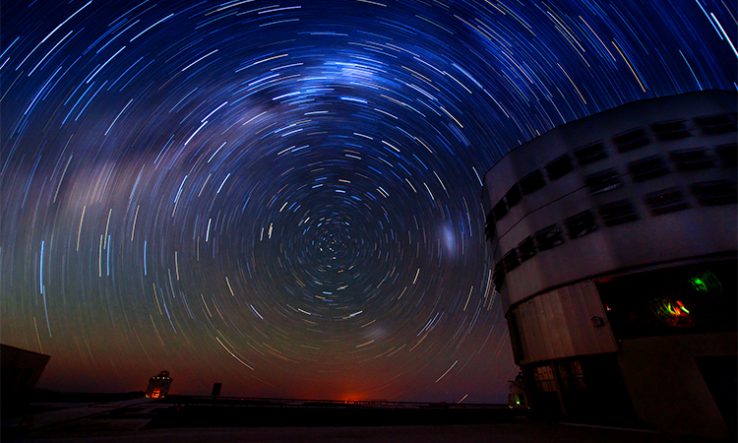
Image: European Southern Observatory [CC BY 2.0] via Flickr
Ambition is essential for would-be European Southern Observatory fellows
For newly qualified astronomers, postdoctoral fellowships at the European Southern Observatory provide an opportunity to work with some of the biggest telescopes in the world.
ESO observatories are located in northern Chile, but the organisation is headquartered in the German town of Garching, near Munich. Fellowships based in both countries are awarded each year, with five to six available in Germany and four to seven in Chile.
Fellows receive a stipend of around €3,000 per month, which can be adjusted to take account of cost-of-living changes. They are initially put on one-year contracts, followed by a two-year extension in Germany and a three-year extension in Chile. This year, the deadline for applications is 15 October, with interviews taking place in mid-December.
Łukasz Tychoniec explains the work he put in to winning a Germany-based fellowship in 2020.
What made you decide to apply to the ESO?
As a PhD student at the Leiden Observatory in the Netherlands, I was mostly working with the Alma Observatory, which is a telescope in Chile that the ESO manages one-third of. Working with the ESO is an opportunity to get closer to the observatories and to understand them better, so for me this was the ideal opportunity—I’d never seen Alma, even though I’d been working and publishing on the data for years.
Did you know anyone working at the ESO before you applied, and did they give you advice?
I had colleagues who had finished ESO fellowships and previously had close collaborators at the ESO. One of the most important insights they gave me was to be on top of what the ESO was doing. I’m working on Alma, but the ESO’s flagship instrument now is the Extremely Large Telescope. Even if you’re not planning to work on the ELT, you need to know something about that.
The goal of the ESO is to create new instruments, but also to manage the instruments and generate interest in them; applicants must show interest in working with the telescopes.
Do you think the ESO is looking for passion as much as anything else?
Well, I applied for several different jobs and writing this one was quite a different experience, because the ESO does not just ask for a standard research statement.
There was a questionnaire, and at interview there were questions I had never encountered before. For example, “name the most impactful paper outside your field” or “name your three specific achievements that you are most proud of”. You certainly need more than just a research plan.
But, you must still show your research credentials?
Yes. There’s a talk that you give to the ESO audience, and there you present both what you have done and what you plan to do at the ESO. It’s very important to show that you’re an expert and that you have a clear plan for what you’re going to do because you get a lot of independence here.
But the ESO doesn’t just give you a space to work and then never see you again; they try to boost collaborations and interactions between scientists and engineers, with the aim of improving the work.
What was the toughest part of the application?
Probably grasping the diversity of questions in the interview.
There were four people on the interview panel and they asked a very broad set of questions. They asked about my science and about my research plans, but also questions like, “What would you do if you got unlimited time on our telescopes?”
It’s not possible, I would say, to prepare for all questions.
Of course, you need to research what the ESO is doing and the different instruments, but the interview was really more about communicating whether you were capable of going to the ESO and demonstrating your qualities.
How did you show your ability to work independently?
Having experience with supervising students, such as through summer schools, can definitely give that impression, because it shows that you really want to move on from being supervised yourself, and that you are capable of starting new collaborations.
The ESO is a research institution, not a university, so you don’t teach classes or anything like that, but you do get the opportunity to supervise or co-supervise students. What’s also very important is being aware that at the ESO you can connect with several different projects and staff members. I mentioned several names of collaborators that I already had, or that I was hoping to make connections with.
What advice would you give to someone applying for the first time?
You need to understand the specifics of the fellowship in the sense that you’re not only going to be independent and get to do your science all the time, but you also get duties. You need to at least acknowledge that, but it’s best if you see it as an opportunity because that’s exactly what the ESO needs from you.
People out of their PhD often just want to do research all the time, but showing an interest in the instruments and seeing the duties as a benefit is crucial.
This is an extract from an article in Research Professional’s Funding Insight service. To subscribe contact sales@researchresearch.com